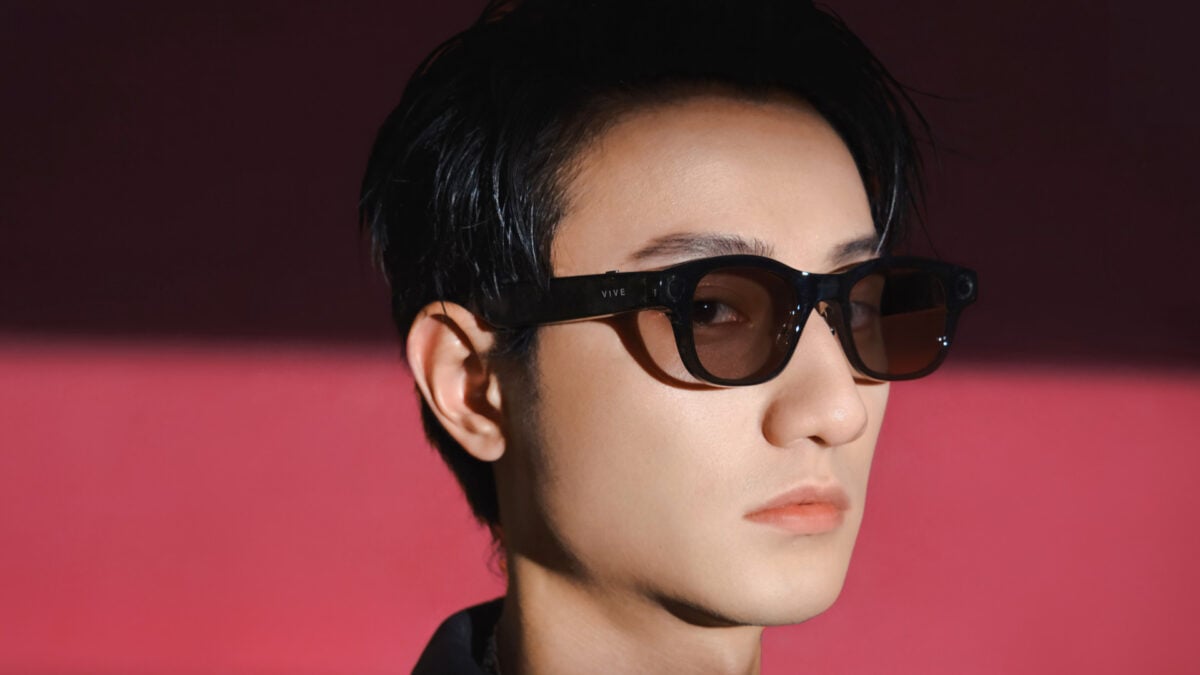One of the Most Prolific VR Headset Makers (Not Meta) Now Has Smart Glasses (Not Ray-Bans)

XR, or extended reality, headsets are on the outs, but smart glasses are eating more and more of what was once VR’s slice of the face-mounted wearables pie. HTC, one of the few lingering pioneers of VR headsets with its Vive series, couldn’t stand up to Meta’s Quest for cheap consumer virtual reality, but it may be able to shoulder in some room with a new pair of smart glasses that goes tit for tat with Meta’s Ray-Ban and Oakley HSTN smart eyewear.
The Ray-Ban Meta smart glasses have proved popular enough that now many of the longtime staples of VR are coming out of the woodwork to offer their own version. HTC is now fashioning a pair of stylish frames called the Vive Eagle. They come in slick translucent plastic and sport the usual 12-megapixel ultrawide cameras and twin speakers on each arm. It’s using a Qualcomm Snapdragon AR1 Gen 1 chipset and comes with 32GB of onboard storage. In a video, HTC showed off a few of the unique features for the Vive Eagle, including AI noise suppression to keep ambient noise down when you’re on a call.
[embed]https://www.youtube.com/watch?v=ActLJCvv6xg[/embed]
Like the Ray-Ban Meta, the Vive Eagle also connects to an AI assistant. The device can use AI image and text recognition if you need it to spell any text you’re looking at. Vive is compatible with Google Gemini and ChatGPT for features like translation, though we don’t have more details about what specific models users will have access to. HTC said users should also be able to ask the AI to set up calendar events. Like Meta’s glasses AI, the Vive Eagle has a “memory” feature that can recall people you’ve met or where you parked your car. Users would need to connect through the Vive Connect app to use any of these AI features. HTC hasn’t mentioned what apps Vive Eagle will be compatible with, and since the smart glasses are currently only available in Taiwan, it’s unclear what sort of compatibility we can expect if it ever makes its way to the U.S.
If the AI wasn’t already a big copycat scheme, the smart glasses would be practically identical to the Ray-Bans in specs. HTC promised the Vive Eagle can do a full 4.5 hours of continuous music playback, and it should last more than 36 hours on standby on its 235mAh battery. Meta promises users should get up to four hours on the Ray-Bans with moderate usage. The larger Oakley Meta glasses promise a up to five hours of audio playback at 100% charge. HTC promises the Vive Eagle will charge from 0 to 50% in less than 10 minutes with fast charging through its glasses case.
VIVE Eagle 🕶️ announced!
🔊 The audio is truly amazing with very little leakage. Loud & bassy.
📷 12MP super wide FOV camera
🎙️ 4x mic array, with a great directional mic to capture your voice even in noisy environments
🔋 Large battery for lasting the entire day. Charges 50% in… pic.twitter.com/i22eXRjQV5— Shen Ye (@shen) August 14, 2025
Considering the specs and capabilities, HTC’s biggest impediment will be price. It’s currently asking for 15,600 new Taiwan dollars, or around $535. The device could cost less if HTC ever brings the Vive Eagle to the U.S., and even then it will face stiff competition. Some China-based companies are going hard into AR glasses, including ones with full screens housed in utterly massive frames. Other Ray-Ban Meta competitors, like these glasses from Xiaomi feature much longer battery life, closer to 8 hours of continuous music playback. Meta has still yet to release a rumored $1,000 pair of AR glasses codenamed “Hypernova” featuring a small heads-up display. We’re still waiting to see what comes out of Android XR and Google’s partnership with glasses maker Xreal.

HTC’s last big product, the Vive Focus Vision, was an expensive $1,000 headset for PC VR with a dated VR-focused chipset and Fresnel lenses, an older style of lenses found on the $300 Meta Quest 3S that are considered worse than pancake lenses found on the $500 Meta Quest 3. If HTC really wants to compete with other big smart glasses makers, it needs to show us a product we truly haven’t seen before—preferably at a lower price.









